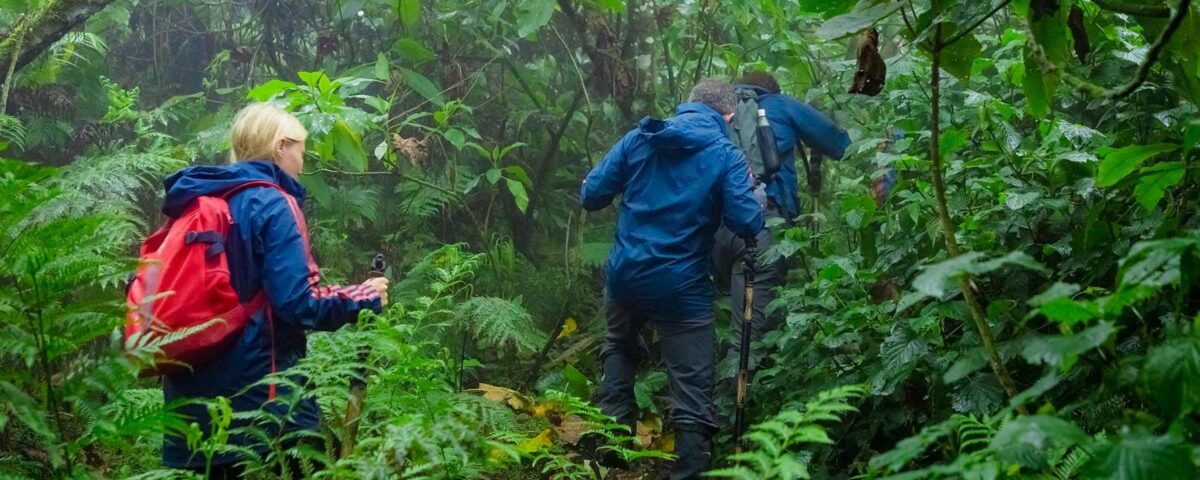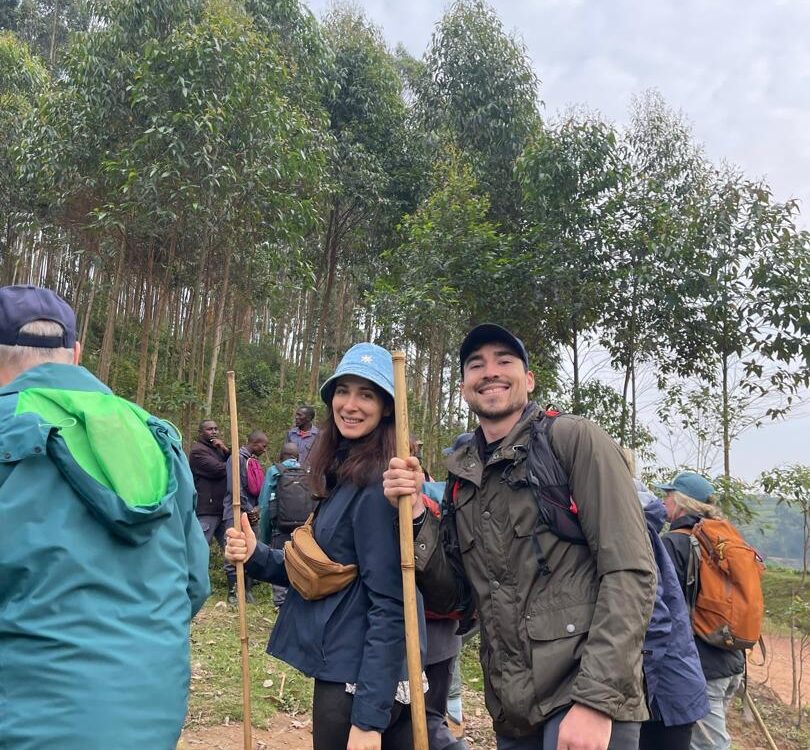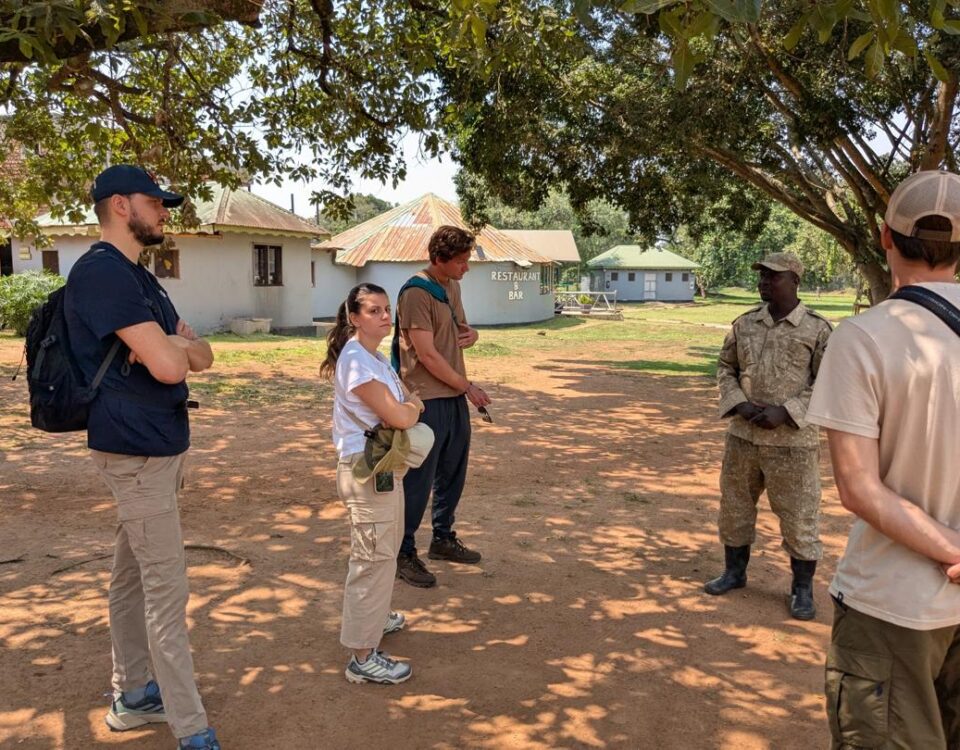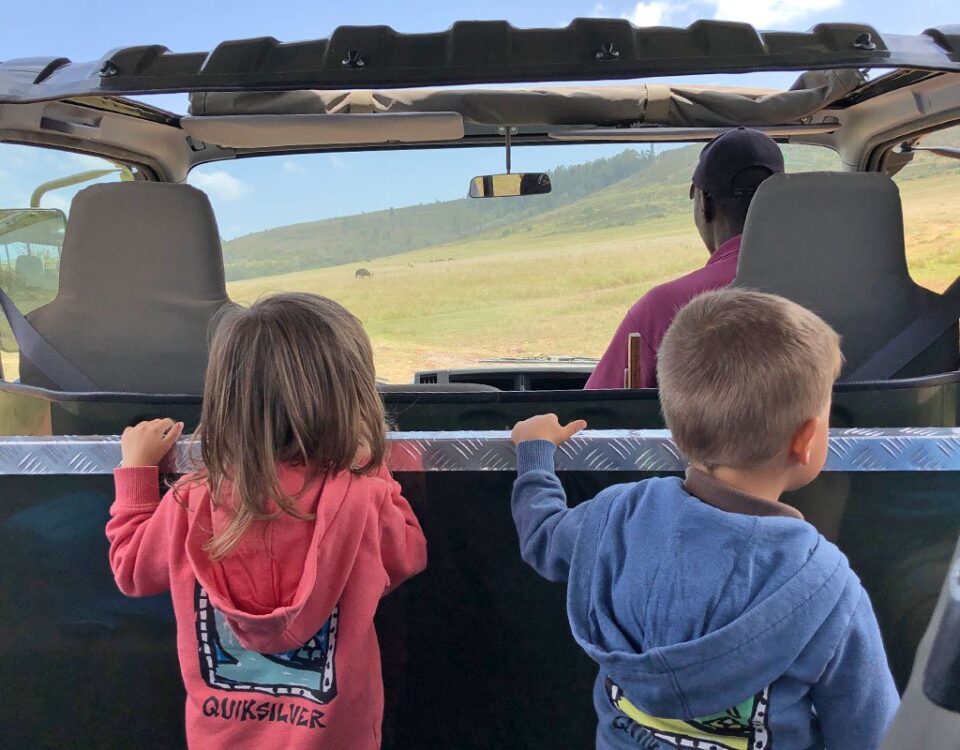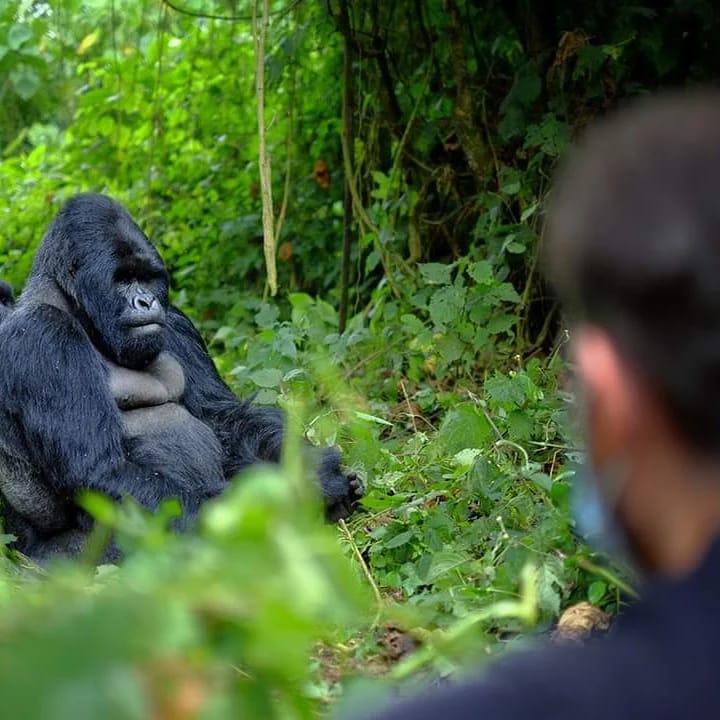
Are Gaiters Necessary for Rwanda Gorilla Trekking?
May 14, 2025
Can I Bring a Camera for Rwanda Gorilla Trekking?
May 14, 2025Are Gloves Useful for Rwanda Gorilla Trekking?
When preparing for a Rwanda safari, one of the most exciting experiences is undoubtedly gorilla trekking in Rwanda. The opportunity to trek through the lush forests of Volcanoes National Park and encounter the incredible mountain gorillas is a once-in-a-lifetime adventure. However, as thrilling as this experience can be, it requires proper preparation and the right gear to ensure safety, comfort, and enjoyment throughout the trek. One essential question that often arises when planning for gorilla trekking in Rwanda is whether gloves are necessary.
Whether you’re embarking on a private gorilla trekking tour or joining a group, the right equipment plays a crucial role in ensuring a smooth and safe adventure. From sturdy footwear to protective clothing, every piece of gear has a purpose, but gloves are often overlooked. In this article, we’ll explore why gloves can be incredibly useful during gorilla trekking in Rwanda, how they can enhance your trekking experience, and whether you should pack them for your upcoming Africa safari.
Uganda Gorilla Trekking Safari Packages and Tours
- 3 Days Gorilla Habituation Safari
- 3 Days Gorilla Trekking Tour
- 3 Days Uganda Fly to Bwindi
- 5 Days Wildlife & Gorilla Safari
- 7 Days Uganda Gorilla Safari
- 8-Day Gorilla & Wildlife Tour
- 9 Days Best of Uganda Safari
- 5 Days Gorilla & Rafting Safari Uganda
- 6 Days Primates Safari Tour
- 10 Days Birding Tour Uganda
- 10 Days Uganda Wildlife Tour
- 12 Days Uganda Wildlife Tour
- 13 Days Pearl of Africa Tour
- 15 Days Uganda Safari
- 18 Days Uganda Safari
- 21 Days Birding Uganda Safari
- 24 Days Best of Uganda Tour
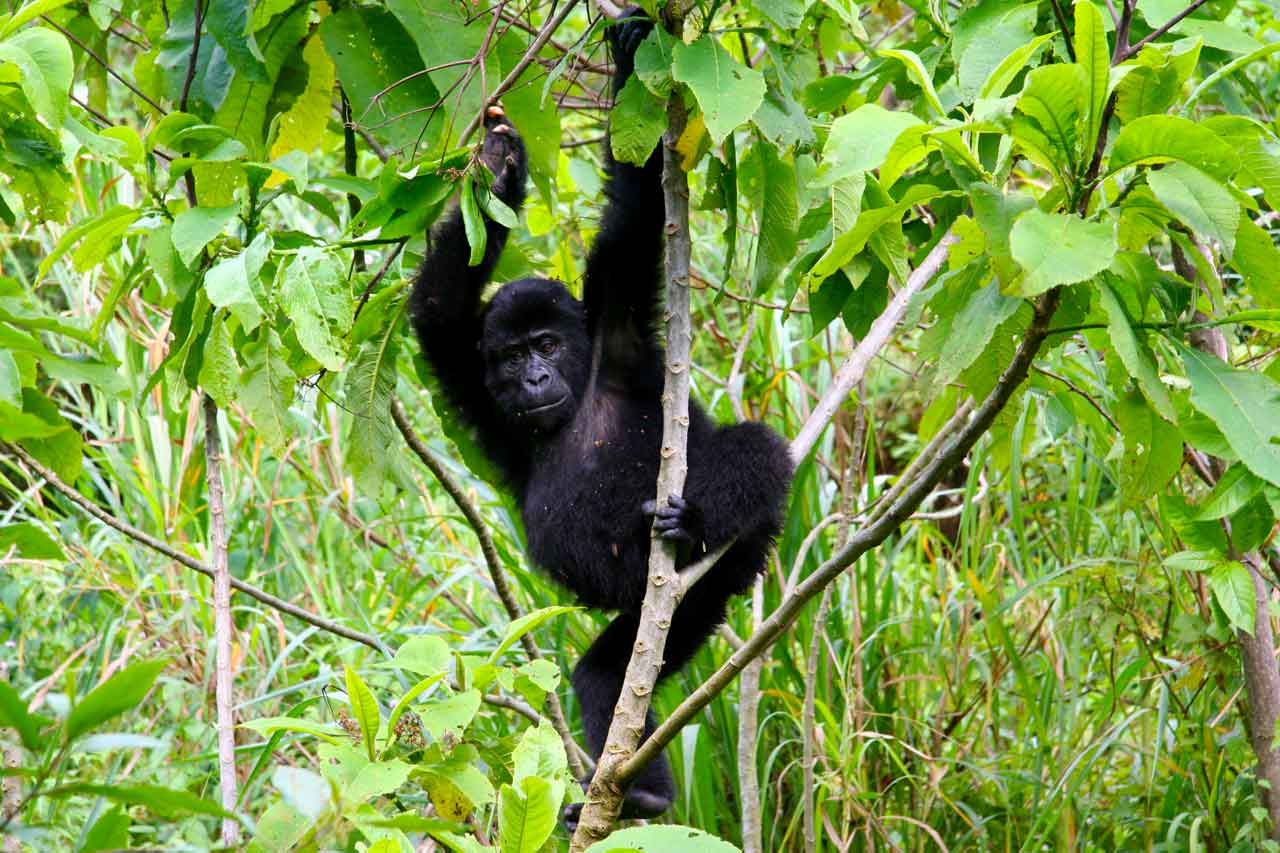
The Role of Gloves in Rwanda Gorilla Trekking
Gorilla trekking in Volcanoes National Park is no easy feat. The terrain can be steep, muddy, and covered in dense vegetation. As you traverse the trails in search of the endangered mountain gorillas, you’ll find yourself pushing through thick foliage, stepping over tree roots, and sometimes even crawling through dense undergrowth. With such conditions, gloves can be an incredibly useful addition to your gear.
Protecting Your Hands from Thorns and Scratches
One of the primary reasons gloves are recommended for Rwanda gorilla trekking is to protect your hands from the thorny plants, sharp branches, and prickly undergrowth that you may encounter along the way. The forests of Volcanoes National Park are filled with vegetation that can easily scratch or cut exposed skin. Gloves act as a barrier, preventing painful cuts and scratches while navigating the rugged terrain.
Trekking through dense underbrush means you’ll often have to push through branches or plants that could leave a mark on your skin. By wearing gloves, you reduce the risk of injury and make the experience more comfortable, allowing you to focus on the excitement of the trek rather than worrying about potential discomfort from thorns or branches.
Offering Better Grip and Control
A pair of gloves can also enhance your grip and control, which is particularly important when you need extra balance on slippery or uneven surfaces. Whether you are holding onto a tree branch for support or navigating muddy trails, gloves with a good grip can help you maintain stability during the trek. This can be especially helpful when climbing hills or crossing streams where the ground is slippery.
For those who are trekking on a budget gorilla safari or seeking a more affordable option, investing in gloves that offer good grip and support can be a small but significant step in making your experience safer and more enjoyable. Even if you’re just walking on smoother paths, gloves will give you that added layer of security and comfort during your trek.
Are Gloves Provided During Gorilla Trekking in Rwanda?
For most Rwanda safaris and gorilla trekking tours, gloves are not typically provided as part of the standard equipment package. However, many tour operators in Rwanda will recommend bringing your own gloves, especially for those who will be trekking through challenging terrain. You can purchase trekking gloves from various outdoor gear stores before your trip, ensuring that they are suitable for the conditions you’ll encounter in Volcanoes National Park.
In some cases, the tour operator may offer rental gloves as part of the trekking package, but this is not guaranteed. It’s always advisable to check with your operator to see if they provide gloves or if you’ll need to bring your own. If you decide to bring your own, choose gloves that are lightweight, breathable, and made of durable material to protect your hands without causing discomfort during long hours of trekking.
Additional Gear to Consider for Your Rwanda Gorilla Trekking Experience
While gloves are an important piece of gear, there are several other essentials you should consider bringing along to ensure a smooth and safe gorilla trekking experience in Rwanda. Gorilla trekking requires physical endurance, so it’s crucial to come prepared with the right clothing, equipment, and accessories.
Sturdy Footwear
When trekking in Volcanoes National Park, sturdy hiking boots are essential. The terrain can be steep, rocky, and muddy, so having durable boots with good ankle support will help prevent injuries and ensure your comfort as you trek through the forest. Waterproof boots are also a good idea, as the area is often wet, particularly during the rainy season.
Gaiters
Gaiters are another piece of gear that can complement your gloves and offer additional protection while trekking in the forest. These garments cover your lower legs and ankles, preventing dirt, mud, and insects from getting into your boots. They also protect your legs from thorny plants and vines you may encounter along the trail.
Rain Gear
Given the unpredictability of the weather in Rwanda, bringing a waterproof jacket or poncho is a smart move. Rwandan rain showers can be heavy and sudden, especially during the wet season, and you’ll want to stay dry and comfortable during your trek. Many trekking tours recommend bringing a rain jacket to stay protected from the elements.
Insect Repellent
Insects, including mosquitoes, are common in Volcanoes National Park, so it’s important to apply insect repellent to your skin before starting the trek. This will protect you from potential bites, especially in the humid forest environment where insects thrive.
The Cost of Rwanda Gorilla Permits and What’s Included
For anyone planning to trek in Volcanoes National Park, one of the primary costs involved is the Rwanda gorilla permit. As of now, the cost for a Rwanda gorilla permit is around $1,500 per person. This permit is required to enter the park and participate in a gorilla trekking experience. It also contributes to the conservation efforts aimed at protecting the endangered mountain gorillas and their habitat.
While the cost of a Rwanda gorilla permit is substantial, it’s important to remember that the fee includes the guidance of experienced park rangers, who will ensure your safety and help you find the gorillas. The permit also grants access to the park and includes the necessary equipment for trekking, such as walking sticks and sometimes even gloves. However, as mentioned earlier, bringing your own gloves is still a good idea, especially if you want something more customized to your needs.
The Cultural Experience of Trekking in Rwanda
A Rwanda safari offers more than just a chance to see gorillas. As you embark on your gorilla trekking safari, you will also have the opportunity to engage with the local communities living around Volcanoes National Park. The area is home to the Batwa people, an indigenous group that has historically lived in the forest. Many tour operators offer cultural experiences where you can visit local villages, learn about the traditional lifestyle of the Batwa, and even participate in dances and ceremonies.
These cultural experiences are a fantastic way to connect with the country’s rich heritage, adding depth and meaning to your gorilla trekking adventure. Whether you’re learning about the Batwa’s traditional hunting techniques, exploring the local crafts, or simply enjoying the warm hospitality of the Rwandan people, these encounters are an unforgettable part of the Rwanda safari experience.
Combining Rwanda Gorilla Trekking with Uganda Gorilla Trekking
For those looking for an even more comprehensive Africa safari, combining Rwanda gorilla trekking with Uganda gorilla trekking can offer an exceptional experience. Uganda is home to Bwindi Impenetrable Forest, another popular destination for gorilla trekking. This combination allows you to experience the best of both countries’ gorilla habitats, each offering unique landscapes and trekking experiences.
You can fly into Rwanda and enjoy a trek in Volcanoes National Park before traveling to Uganda for another gorilla trek. This combination not only gives you the chance to see more gorillas but also exposes you to different cultures and ecosystems, making it an ideal option for those seeking a deeper connection with the region’s wildlife and heritage.
Conclusion: Are Gloves Useful for Rwanda Gorilla Trekking?
In conclusion, gloves are a valuable and highly recommended accessory for anyone preparing for gorilla trekking in Rwanda. While not always provided by tour operators, gloves can protect your hands from thorns, scratches, and rough vegetation while improving your grip and comfort on the trail. As part of your Rwanda safari, packing gloves along with other essential gear such as sturdy boots, gaiters, and insect repellent will ensure that you’re well-prepared for your trekking adventure.
The experience of trekking through the dense forest in search of mountain gorillas is a truly magical one, and with the right preparation, you can make the most of it. Whether you are exploring Volcanoes National Park for the first time or combining Rwanda gorilla trekking with an Uganda safari, gloves play a crucial role in enhancing your trekking experience and ensuring your safety throughout the journey. So, make sure to pack your gloves and get ready for an unforgettable adventure in Rwanda’s stunning wilderness.
When preparing for a Rwanda safari, one of the most exciting experiences is undoubtedly gorilla trekking in Rwanda. The opportunity to trek through the lush forests of Volcanoes National Park and encounter the incredible mountain gorillas is a once-in-a-lifetime adventure. However, as thrilling as this experience can be, it requires proper preparation and the right gear to ensure safety, comfort, and enjoyment throughout the trek. One essential question that often arises when planning for gorilla trekking in Rwanda is whether gloves are necessary.
Whether you’re embarking on a private gorilla trekking tour or joining a group, the right equipment plays a crucial role in ensuring a smooth and safe adventure. From sturdy footwear to protective clothing, every piece of gear has a purpose, but gloves are often overlooked. In this article, we’ll explore why gloves can be incredibly useful during gorilla trekking in Rwanda, how they can enhance your trekking experience, and whether you should pack them for your upcoming Africa safari.
The Role of Gloves in Rwanda Gorilla Trekking
Gorilla trekking in Volcanoes National Park is no easy feat. The terrain can be steep, muddy, and covered in dense vegetation. As you traverse the trails in search of the endangered mountain gorillas, you’ll find yourself pushing through thick foliage, stepping over tree roots, and sometimes even crawling through dense undergrowth. With such conditions, gloves can be an incredibly useful addition to your gear.
Protecting Your Hands from Thorns and Scratches
One of the primary reasons gloves are recommended for Rwanda gorilla trekking is to protect your hands from the thorny plants, sharp branches, and prickly undergrowth that you may encounter along the way. The forests of Volcanoes National Park are filled with vegetation that can easily scratch or cut exposed skin. Gloves act as a barrier, preventing painful cuts and scratches while navigating the rugged terrain.
Trekking through dense underbrush means you’ll often have to push through branches or plants that could leave a mark on your skin. By wearing gloves, you reduce the risk of injury and make the experience more comfortable, allowing you to focus on the excitement of the trek rather than worrying about potential discomfort from thorns or branches.
Offering Better Grip and Control
A pair of gloves can also enhance your grip and control, which is particularly important when you need extra balance on slippery or uneven surfaces. Whether you are holding onto a tree branch for support or navigating muddy trails, gloves with a good grip can help you maintain stability during the trek. This can be especially helpful when climbing hills or crossing streams where the ground is slippery.
For those who are trekking on a budget gorilla safari or seeking a more affordable option, investing in gloves that offer good grip and support can be a small but significant step in making your experience safer and more enjoyable. Even if you’re just walking on smoother paths, gloves will give you that added layer of security and comfort during your trek.
Are Gloves Provided During Gorilla Trekking in Rwanda?
For most Rwanda safaris and gorilla trekking tours, gloves are not typically provided as part of the standard equipment package. However, many tour operators in Rwanda will recommend bringing your own gloves, especially for those who will be trekking through challenging terrain. You can purchase trekking gloves from various outdoor gear stores before your trip, ensuring that they are suitable for the conditions you’ll encounter in Volcanoes National Park.
In some cases, the tour operator may offer rental gloves as part of the trekking package, but this is not guaranteed. It’s always advisable to check with your operator to see if they provide gloves or if you’ll need to bring your own. If you decide to bring your own, choose gloves that are lightweight, breathable, and made of durable material to protect your hands without causing discomfort during long hours of trekking.
Additional Gear to Consider for Your Rwanda Gorilla Trekking Experience
While gloves are an important piece of gear, there are several other essentials you should consider bringing along to ensure a smooth and safe gorilla trekking experience in Rwanda. Gorilla trekking requires physical endurance, so it’s crucial to come prepared with the right clothing, equipment, and accessories.
Sturdy Footwear
When trekking in Volcanoes National Park, sturdy hiking boots are essential. The terrain can be steep, rocky, and muddy, so having durable boots with good ankle support will help prevent injuries and ensure your comfort as you trek through the forest. Waterproof boots are also a good idea, as the area is often wet, particularly during the rainy season.
Gaiters
Gaiters are another piece of gear that can complement your gloves and offer additional protection while trekking in the forest. These garments cover your lower legs and ankles, preventing dirt, mud, and insects from getting into your boots. They also protect your legs from thorny plants and vines you may encounter along the trail.
Rain Gear
Given the unpredictability of the weather in Rwanda, bringing a waterproof jacket or poncho is a smart move. Rwandan rain showers can be heavy and sudden, especially during the wet season, and you’ll want to stay dry and comfortable during your trek. Many trekking tours recommend bringing a rain jacket to stay protected from the elements.
Insect Repellent
Insects, including mosquitoes, are common in Volcanoes National Park, so it’s important to apply insect repellent to your skin before starting the trek. This will protect you from potential bites, especially in the humid forest environment where insects thrive.
The Cost of Rwanda Gorilla Permits and What’s Included
For anyone planning to trek in Volcanoes National Park, one of the primary costs involved is the Rwanda gorilla permit. As of now, the cost for a Rwanda gorilla permit is around $1,500 per person. This permit is required to enter the park and participate in a gorilla trekking experience. It also contributes to the conservation efforts aimed at protecting the endangered mountain gorillas and their habitat.
While the cost of a Rwanda gorilla permit is substantial, it’s important to remember that the fee includes the guidance of experienced park rangers, who will ensure your safety and help you find the gorillas. The permit also grants access to the park and includes the necessary equipment for trekking, such as walking sticks and sometimes even gloves. However, as mentioned earlier, bringing your own gloves is still a good idea, especially if you want something more customized to your needs.
The Cultural Experience of Trekking in Rwanda
A Rwanda safari offers more than just a chance to see gorillas. As you embark on your gorilla trekking safari, you will also have the opportunity to engage with the local communities living around Volcanoes National Park. The area is home to the Batwa people, an indigenous group that has historically lived in the forest. Many tour operators offer cultural experiences where you can visit local villages, learn about the traditional lifestyle of the Batwa, and even participate in dances and ceremonies.
These cultural experiences are a fantastic way to connect with the country’s rich heritage, adding depth and meaning to your gorilla trekking adventure. Whether you’re learning about the Batwa’s traditional hunting techniques, exploring the local crafts, or simply enjoying the warm hospitality of the Rwandan people, these encounters are an unforgettable part of the Rwanda safari experience.
Combining Rwanda Gorilla Trekking with Uganda Gorilla Trekking
For those looking for an even more comprehensive Africa safari, combining Rwanda gorilla trekking with Uganda gorilla trekking can offer an exceptional experience. Uganda is home to Bwindi Impenetrable Forest, another popular destination for gorilla trekking. This combination allows you to experience the best of both countries’ gorilla habitats, each offering unique landscapes and trekking experiences.
You can fly into Rwanda and enjoy a trek in Volcanoes National Park before traveling to Uganda for another gorilla trek. This combination not only gives you the chance to see more gorillas but also exposes you to different cultures and ecosystems, making it an ideal option for those seeking a deeper connection with the region’s wildlife and heritage.
Conclusion: Are Gloves Useful for Rwanda Gorilla Trekking?
In conclusion, gloves are a valuable and highly recommended accessory for anyone preparing for gorilla trekking in Rwanda. While not always provided by tour operators, gloves can protect your hands from thorns, scratches, and rough vegetation while improving your grip and comfort on the trail. As part of your Rwanda safari, packing gloves along with other essential gear such as sturdy boots, gaiters, and insect repellent will ensure that you’re well-prepared for your trekking adventure.
The experience of trekking through the dense forest in search of mountain gorillas is a truly magical one, and with the right preparation, you can make the most of it. Whether you are exploring Volcanoes National Park for the first time or combining Rwanda gorilla trekking with an Uganda safari, gloves play a crucial role in enhancing your trekking experience and ensuring your safety throughout the journey. So, make sure to pack your gloves and get ready for an unforgettable adventure in Rwanda’s stunning wilderness.

